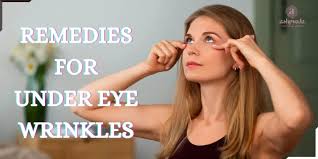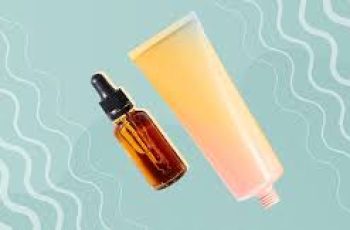
How to Treat & Prevent Under-Eye Wrinkles
Under-eye wrinkles are a natural part of aging, and while they’re bound to appear eventually, there are effective ways to minimize, treat, and even delay them—no matter your age or skin type.
Whether you find them charming or frustrating, under-eye lines don’t have to define your look—and with the right skincare choices, you can soften their appearance or prevent them from deepening.
We’ve gathered four powerful ways to help you address under-eye wrinkles—each varying in price, intensity, and comfort level—so you can find the right option that aligns with your goals and lifestyle.
Why Do I Have Under-Eye Wrinkles?
The skin around your eyes is up to 30% thinner than the rest of your face, making it more delicate and one of the first places where signs of aging become visible.
Daily facial movements—like laughing, blinking, rubbing your eyes, applying makeup, or removing it—contribute to repeated stress that gradually leads to fine lines and wrinkles.
Environmental aggressors such as pollution, UV rays, and free radicals easily penetrate this thin skin, accelerating collagen loss and creating premature creasing.
Lack of hydration and skipped eye care routines can further weaken the skin barrier, making this area look tired, sunken, or etched with fine lines far sooner than expected.
Treating and protecting the under-eye area should be a core part of your skincare routine, right alongside SPF and moisturizers for overall anti-aging benefits.
How to Treat Under-Eye Wrinkles
The number one rule when treating under-eye wrinkles is to remember that early prevention is far more effective than damage control—starting a good routine early makes all the difference.
Even if you’re in your twenties, using eye creams and anti-aging products will delay wrinkle formation, keeping your skin supple, firm, and youthful as long as possible.
But don’t worry if you’re older or already seeing wrinkles—there are plenty of treatments that offer visible improvements while preventing future lines from forming.
1. Topical Products for Under-Eye Wrinkles
Topical treatments are the most affordable and accessible way to address under-eye wrinkles, especially when applied consistently and paired with the right active ingredients.
Look for eye creams or serums that contain retinol, vitamin C, and hyaluronic acid—these powerful ingredients work in different ways to support smoother, plumper under-eye skin.
Hyaluronic Acid
Hyaluronic acid attracts and binds moisture to the skin like a sponge, instantly plumping fine lines and making the skin around the eyes appear smoother and firmer.
Though the effect is temporary, daily application can maintain hydration and visibly reduce the appearance of crow’s feet or dehydration lines throughout the day.
Retinol
Retinol boosts collagen production and accelerates cell turnover, softening fine lines and helping smooth skin texture when used consistently for a minimum of 8–12 weeks.
Start with a low-strength formula specifically made for the eye area, and gradually build up frequency to avoid irritation, flaking, or sensitivity.
Retinol increases sun sensitivity, so it should only be used at night, and always followed by an SPF during the day to protect newly exposed skin cells from UV damage.
Vitamin C
Vitamin C helps brighten the skin, improve collagen production, and fight off free radicals caused by sun and pollution—all of which contribute to under-eye aging.
It’s especially useful for preventing new lines from forming, although it takes several months of consistent use to see visible improvements in texture and tone.
2. Botox
Botox remains one of the most effective non-surgical options for completely erasing under-eye wrinkles, particularly for those caused by repetitive muscle movement.
Botox works by temporarily relaxing the muscles around your eyes, preventing squinting and crinkling that cause deep expression lines over time.
Results usually become visible within 3–5 days of treatment and typically last 3 to 4 months, making it a quick fix for events or long-term wrinkle maintenance.
It’s crucial to find a certified, experienced professional to administer Botox safely and precisely in the delicate under-eye area for natural-looking results.
Though Botox delivers dramatic improvement, it’s not permanent and will require ongoing appointments to maintain smooth, wrinkle-free skin.
The cost of Botox varies by provider and location, but expect to pay upwards of £300, which can be a major consideration for those on a tight budget.
3. Microneedling
Microneedling, also called dermarolling, is a collagen-inducing therapy that involves puncturing the skin with tiny needles to stimulate healing and tissue regeneration.
The process tricks the body into producing more collagen, which fills in lines and strengthens the skin over time—especially useful for treating fine lines under the eyes.
Most patients see results after a few weekly sessions, with full results becoming noticeable within 4 to 6 weeks depending on skin type and frequency of treatments.
The treatment is only mildly uncomfortable and generally well-tolerated, but it’s best done by professionals when treating delicate areas like under the eyes.
There are many at-home microneedling tools available, but self-treating near the eyes can be risky and may cause irritation, bruising, or even scarring if done improperly.
Microneedling is not recommended for those with rosacea, eczema, or psoriasis as the treatment can worsen flare-ups and damage already inflamed or sensitive skin.
4. Laser Treatment (Fraxel)
Laser resurfacing, particularly Fraxel laser, is one of the most aggressive but effective treatments for stubborn under-eye wrinkles and advanced signs of aging.
Fraxel uses targeted, high-energy light to heat and damage small sections of the skin, stimulating intense collagen remodeling during the healing process.
Yes, it sounds counterintuitive to injure your skin to make it look better—but it’s this very trauma that triggers your body to repair and renew the area more effectively.
Fraxel is painful and usually requires numbing cream before treatment—but many people say the dramatic, long-lasting results are well worth the temporary discomfort.
After the procedure, you’ll experience redness, sensitivity, and a rough skin texture similar to sunburn for up to two weeks as your skin regenerates.
Strict sun protection and gentle skincare are critical post-treatment to avoid pigment changes or additional damage while your skin is in recovery mode.
Once the skin has fully healed, the under-eye area can look dramatically younger, smoother, and tighter—many patients report looking up to 10 years younger after a series of treatments.
Bonus Tips to Prevent & Delay Under-Eye Wrinkles
Even the most advanced treatment can’t replace good daily habits, so here are a few practical, low-cost ways to protect your under-eyes and preserve your youthful glow:
Always remove makeup gently at night—never rub or tug, and skip makeup wipes in favor of micellar water or cleansing balms that melt product off with minimal friction.
Use your ring finger to apply eye products—it’s the weakest finger and applies the least pressure, helping avoid damage to the fragile under-eye skin.
Never skip SPF, even when it’s cloudy or raining—UV rays penetrate clouds and windows, and contribute to the formation of wrinkles, dark circles, and thinning skin.
Stay hydrated inside and out—drink at least 8 glasses of water daily and use a humidifier during dry winter months to prevent dehydration from showing on your skin.
Prioritize sleep and stress management—lack of rest and chronic stress accelerate skin aging, especially around the eyes where signs of fatigue appear first.
Don’t forget to smile—but also embrace the lines that come with laughter, joy, and expression—they tell a beautiful story and are nothing to be ashamed of.
Final Thoughts
Under-eye wrinkles may be inevitable, but that doesn’t mean you can’t reduce their appearance or prevent them from developing sooner than necessary.
With options ranging from budget-friendly serums to high-tech treatments like Botox and lasers, there’s something that suits every skin type, age, and lifestyle.
The most important takeaway? Start early, stay consistent, and never underestimate the power of hydration, sun protection, and high-quality skincare.
Whether you go for a potent eye cream or schedule a professional treatment, your future self—and your eyes—will thank you for the care and attention you give today.


